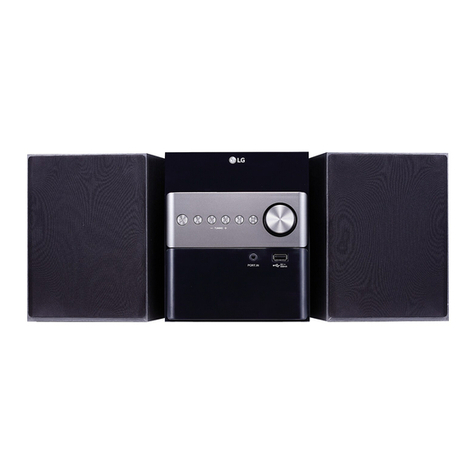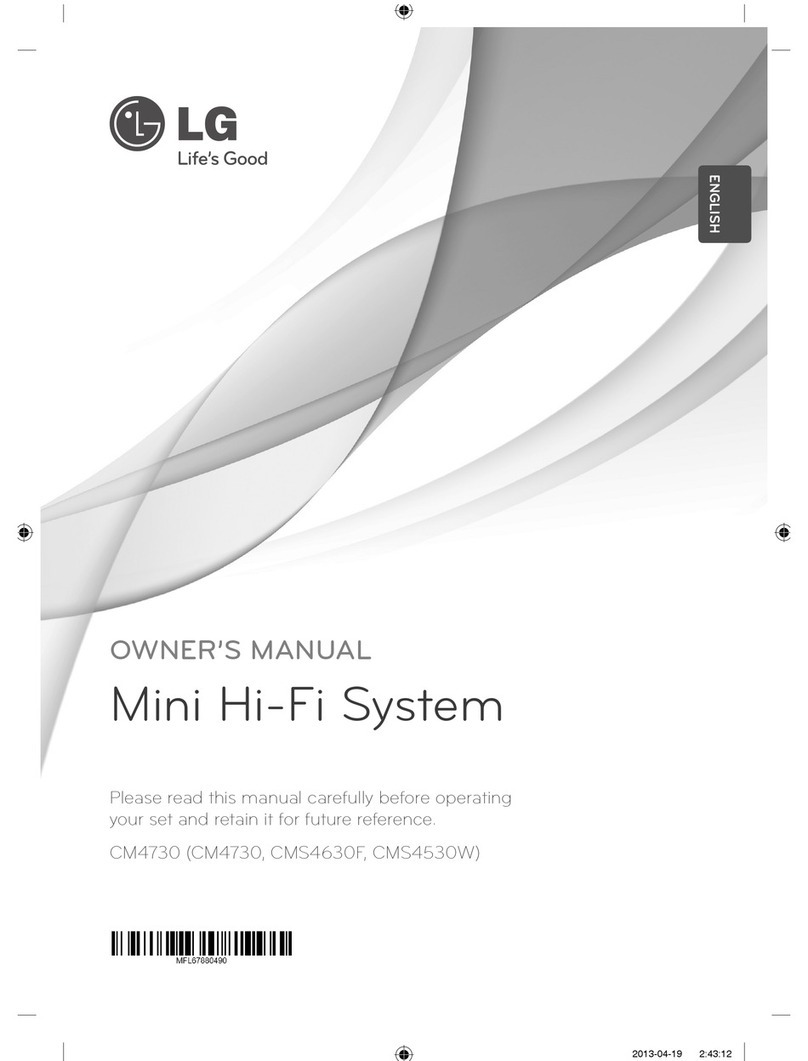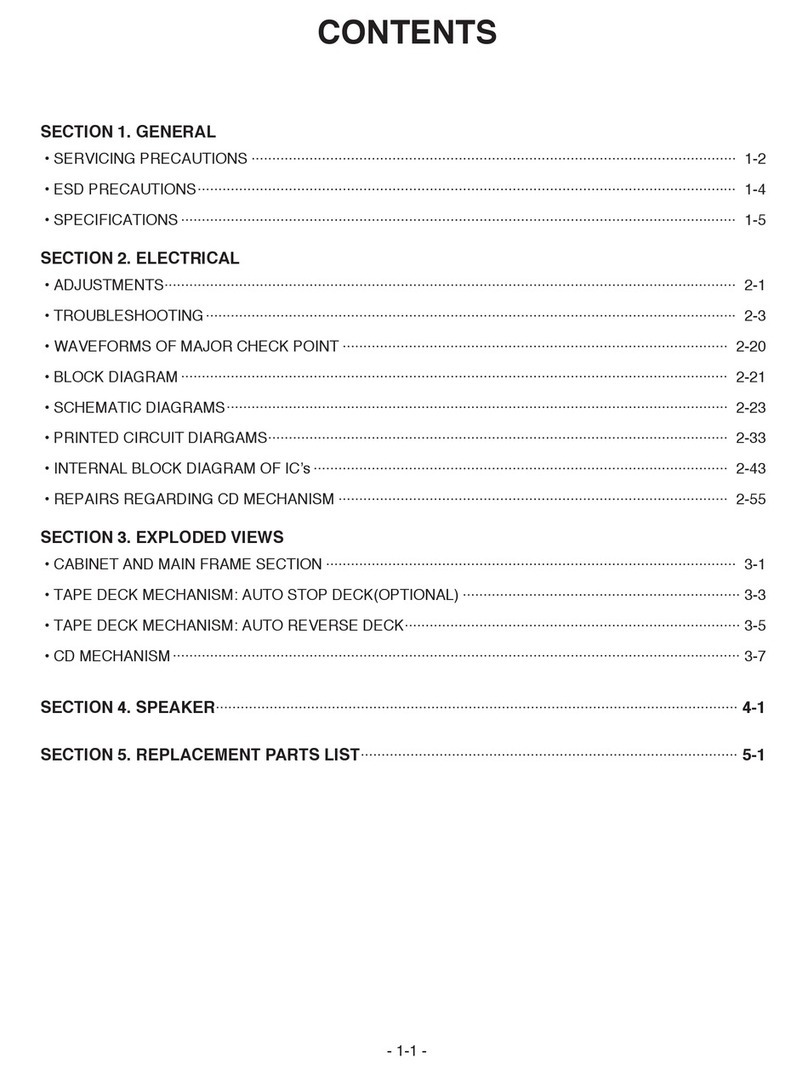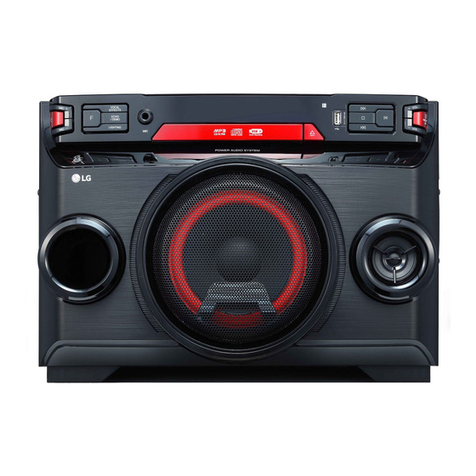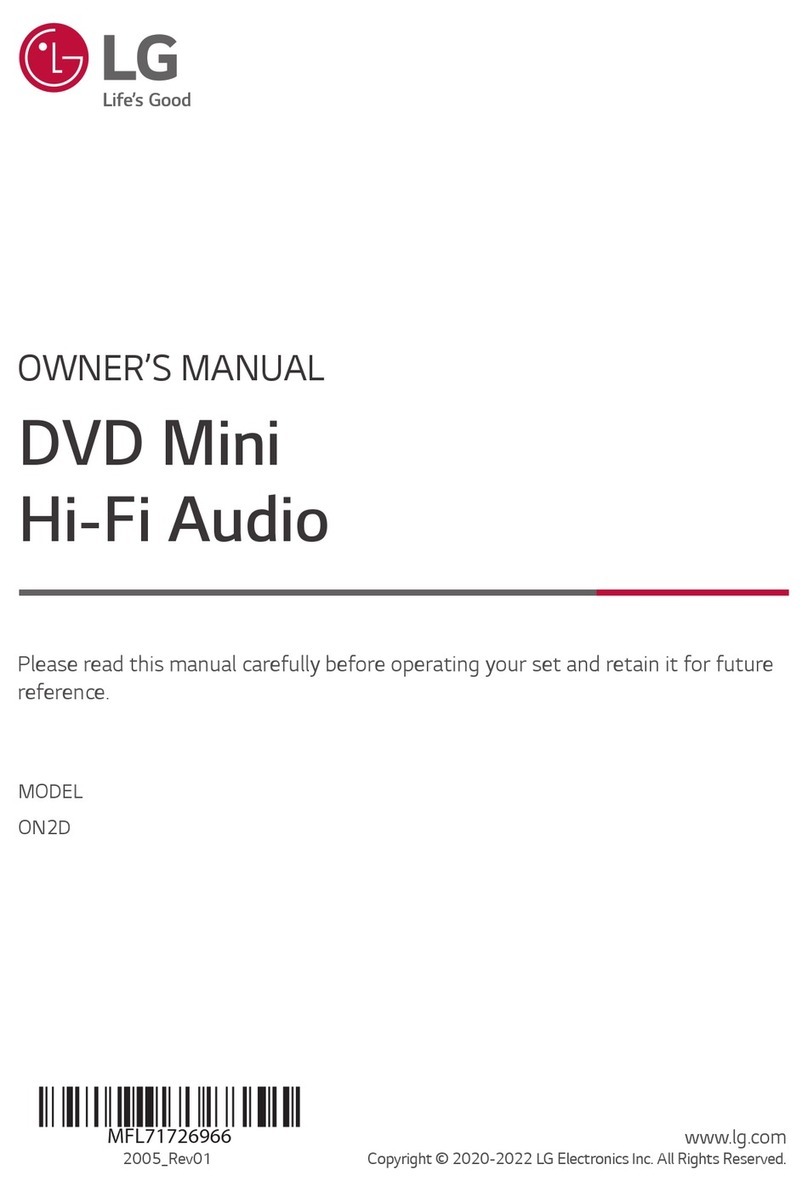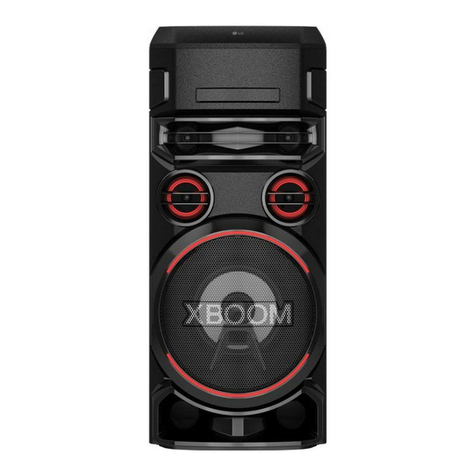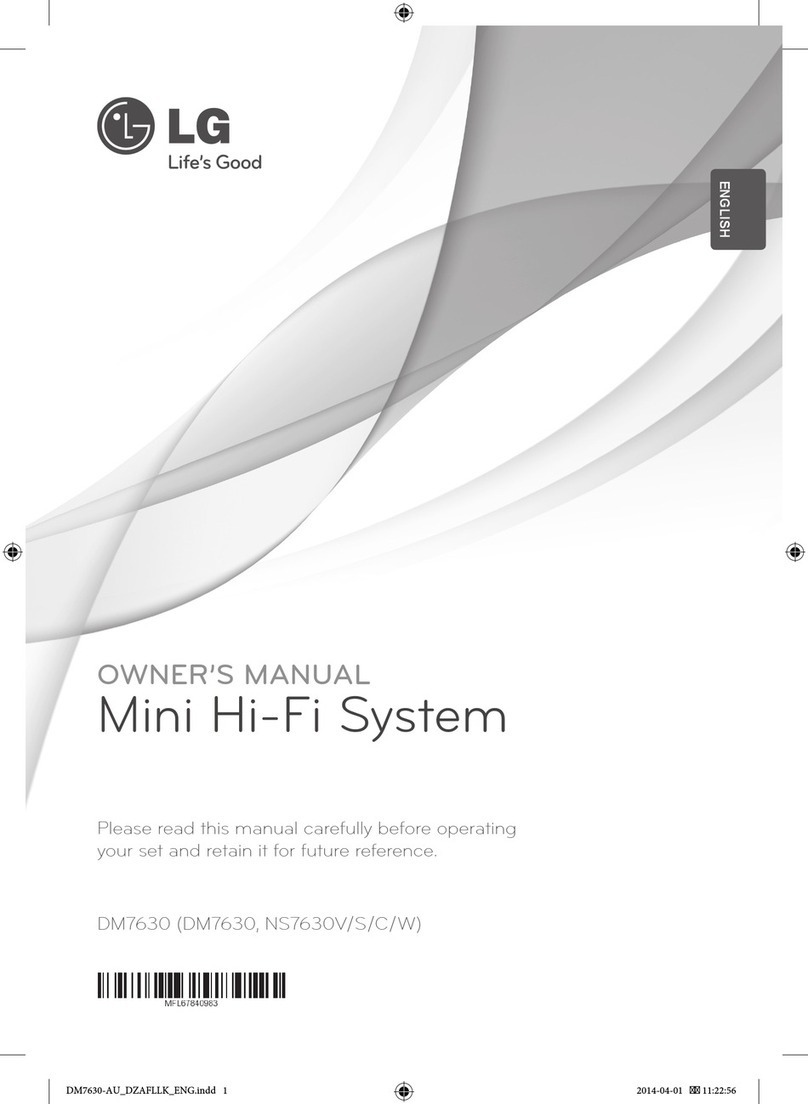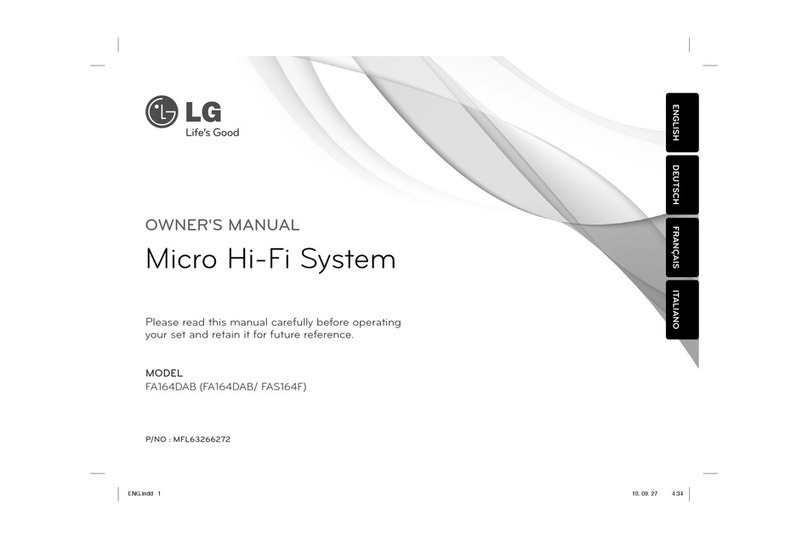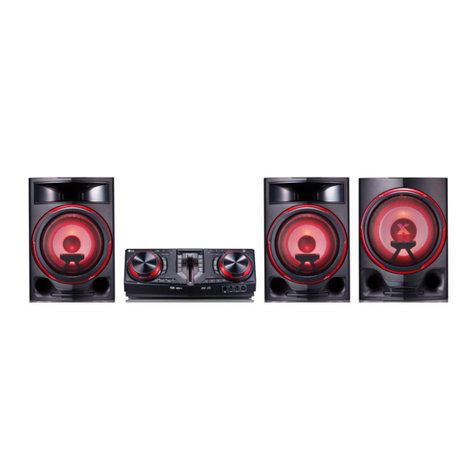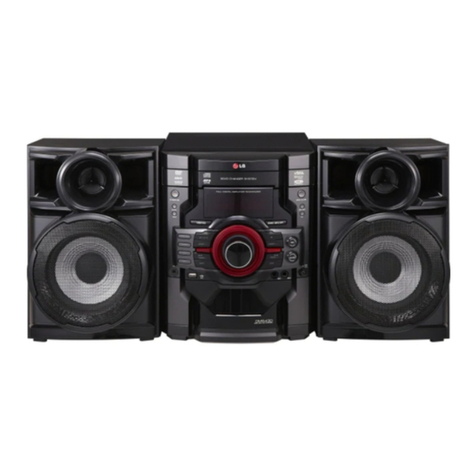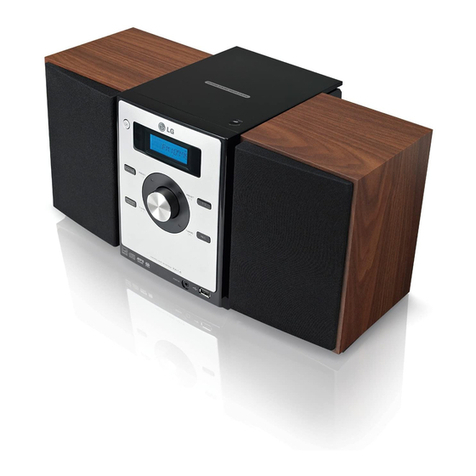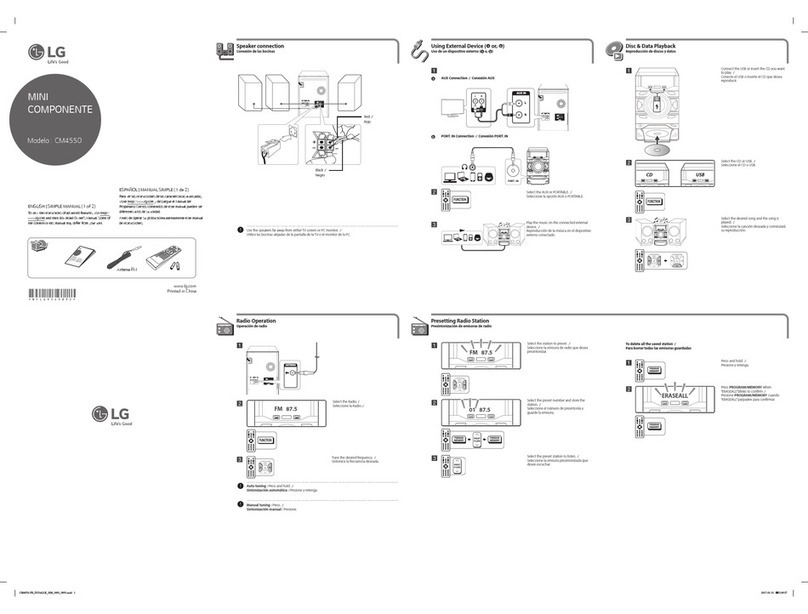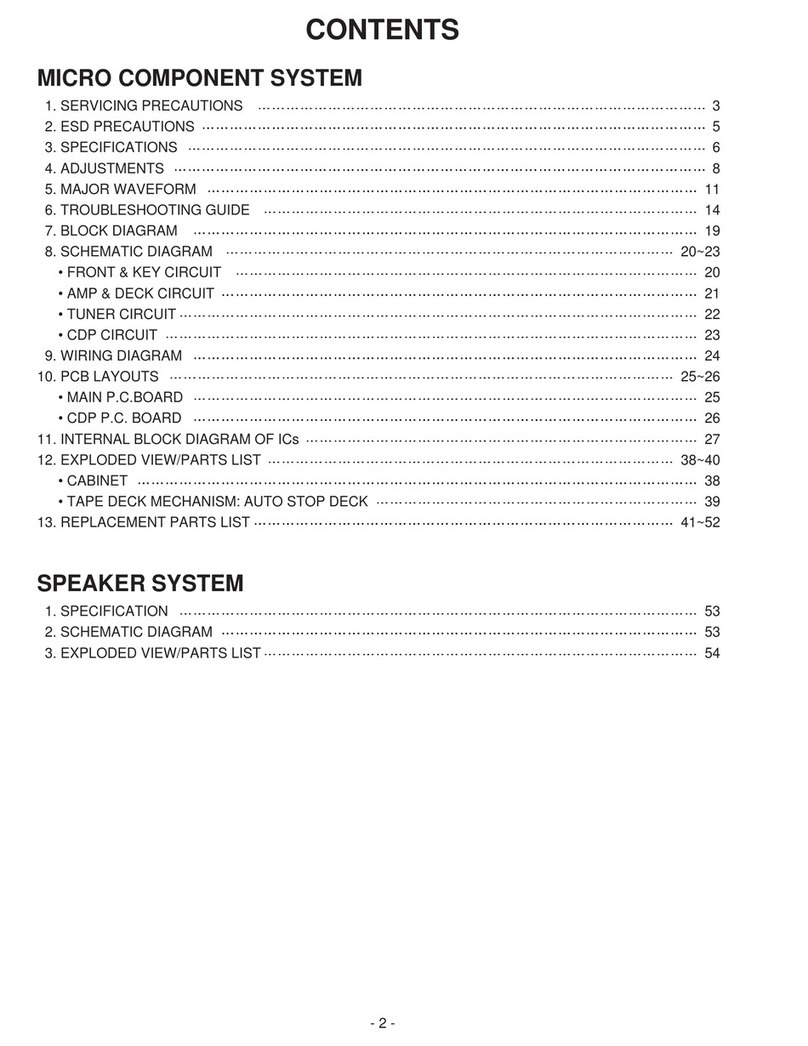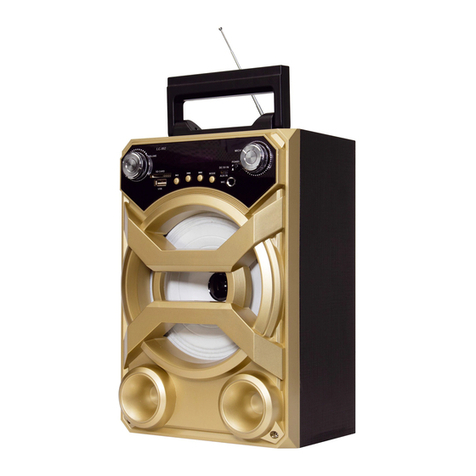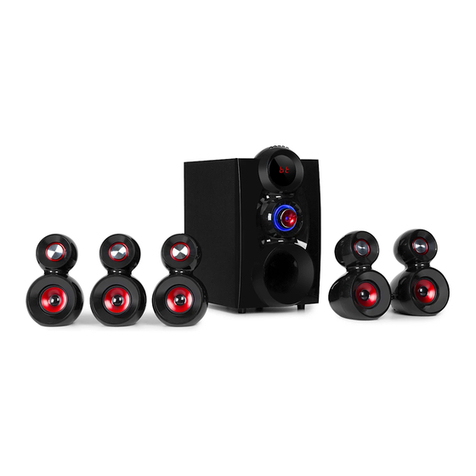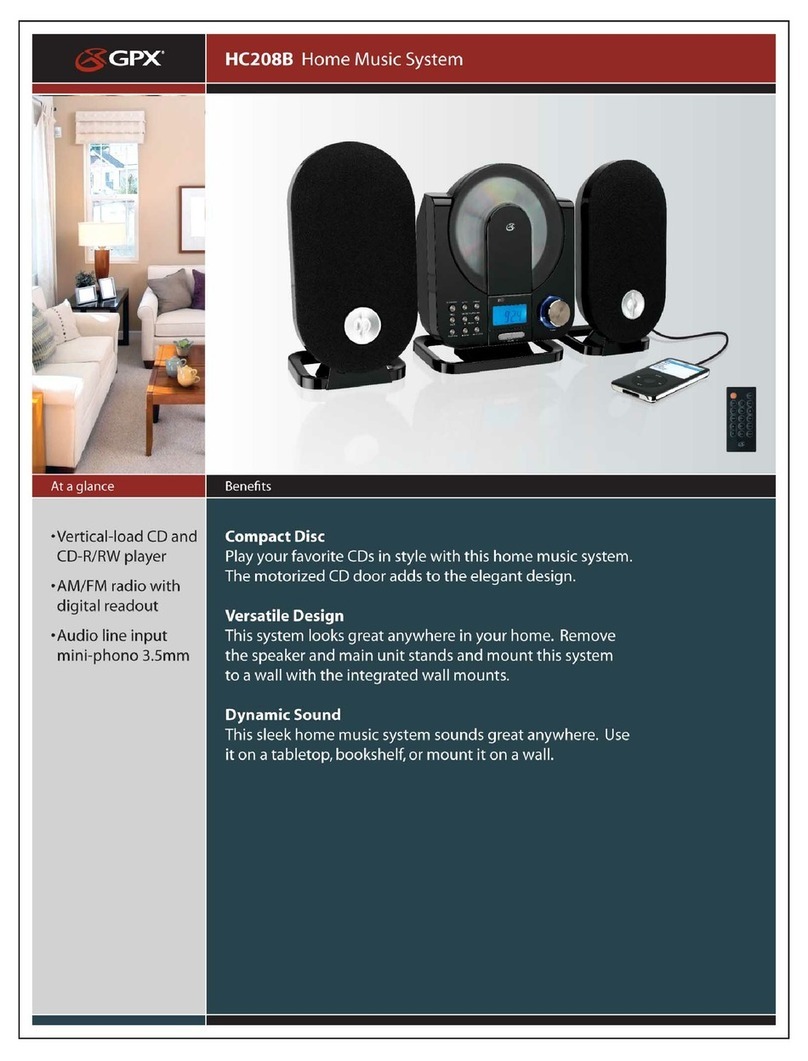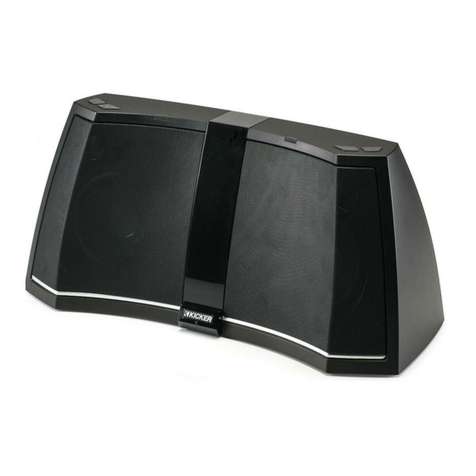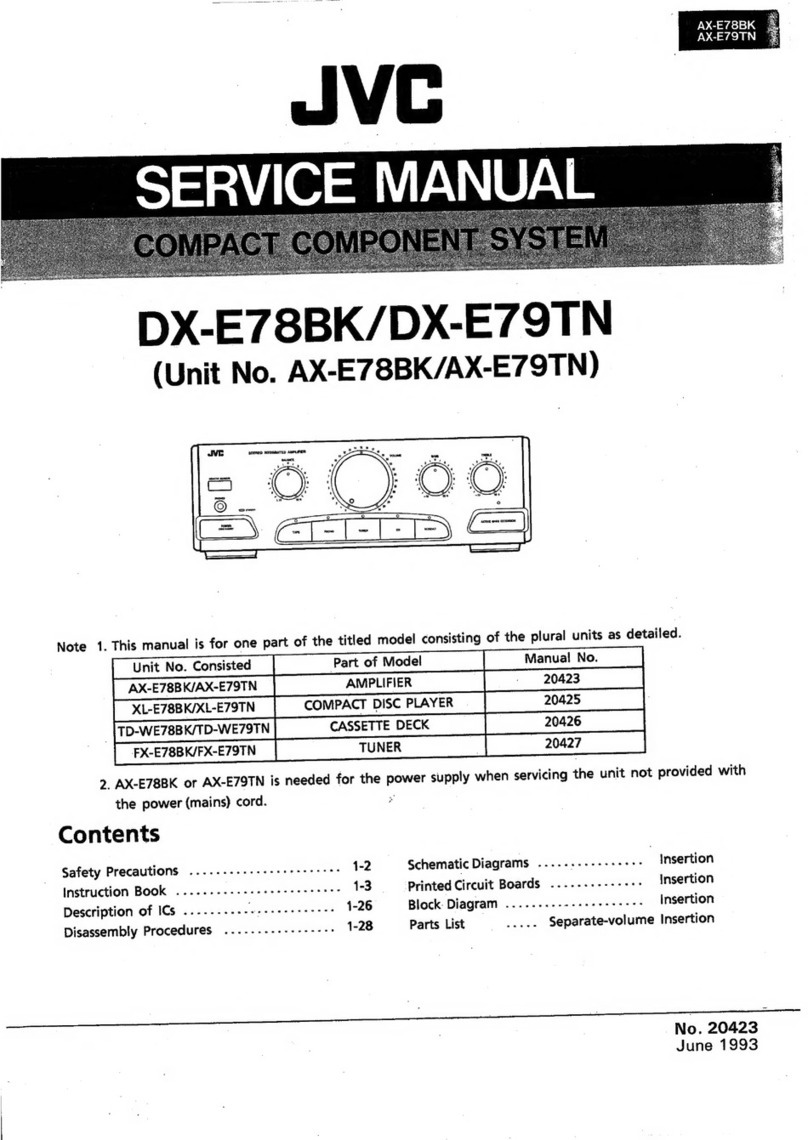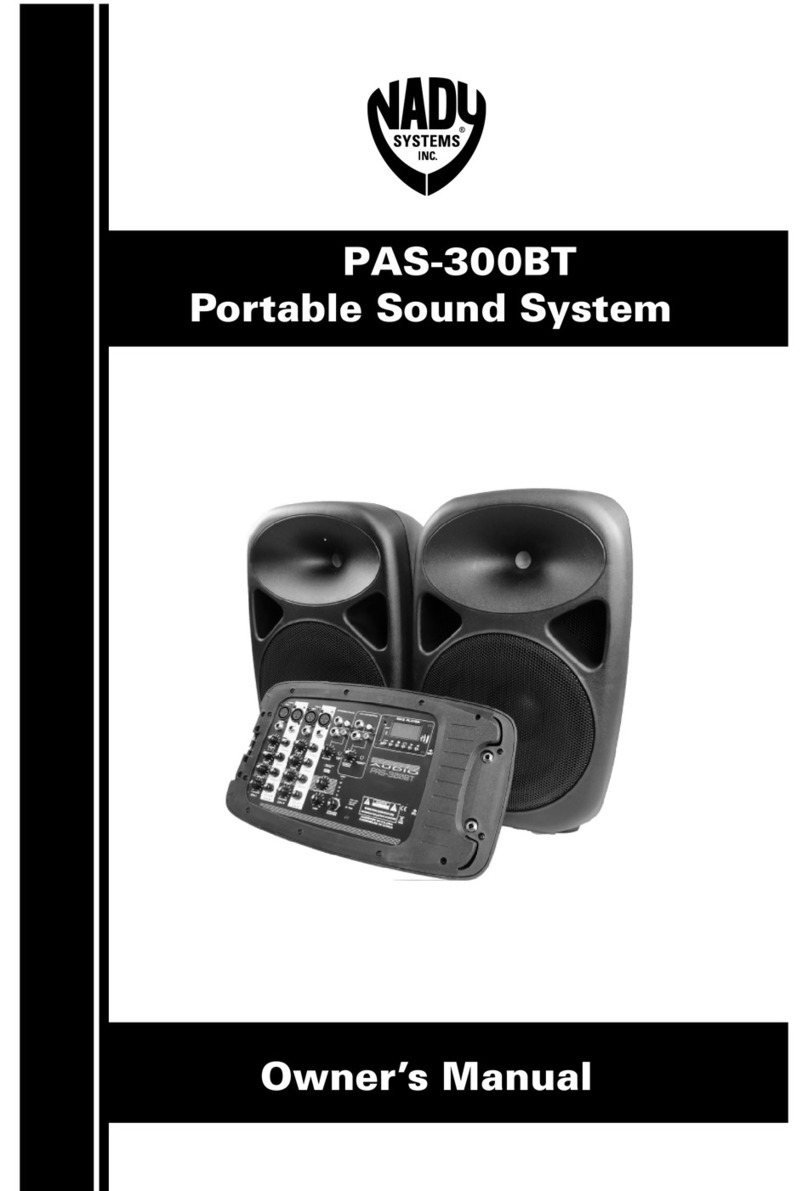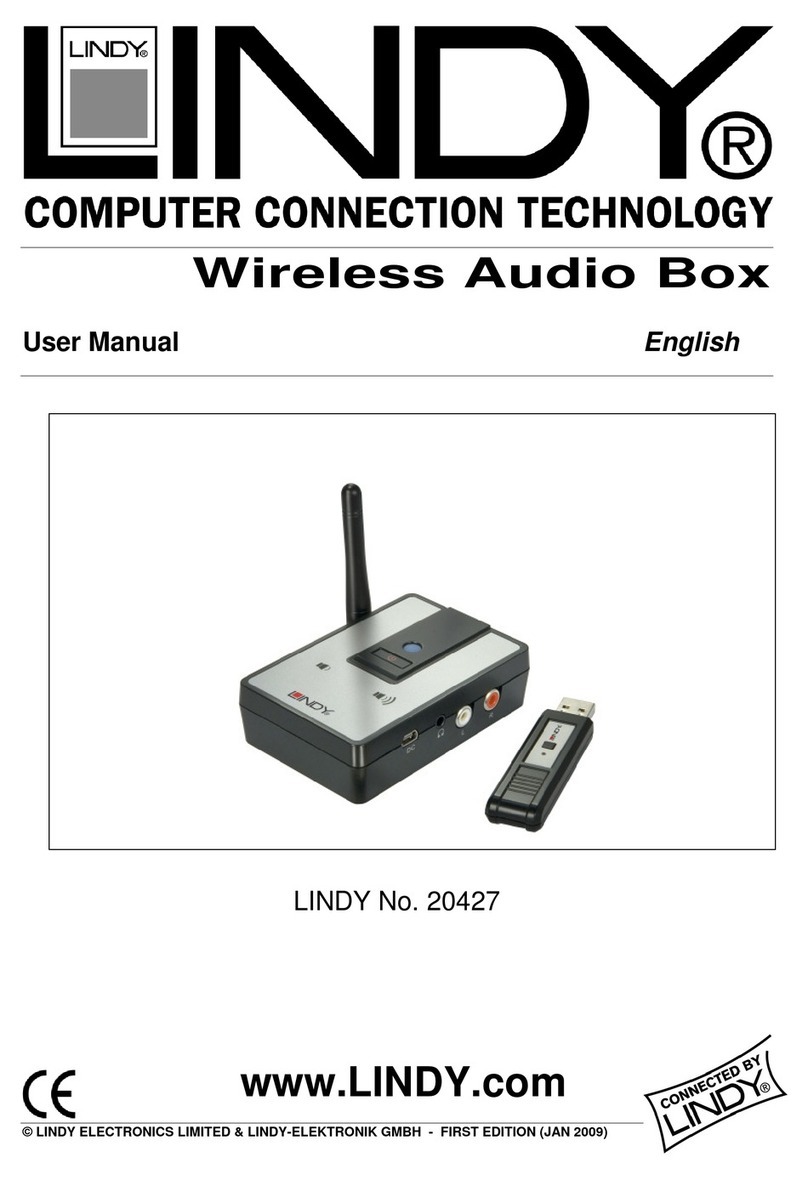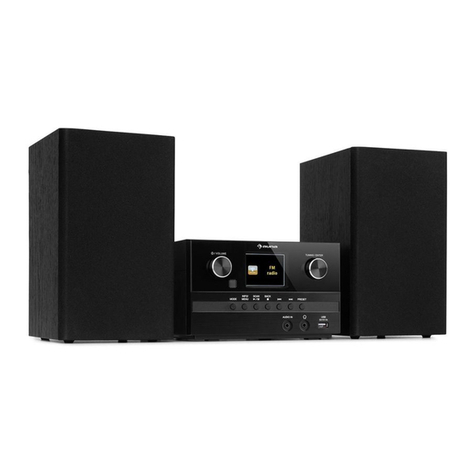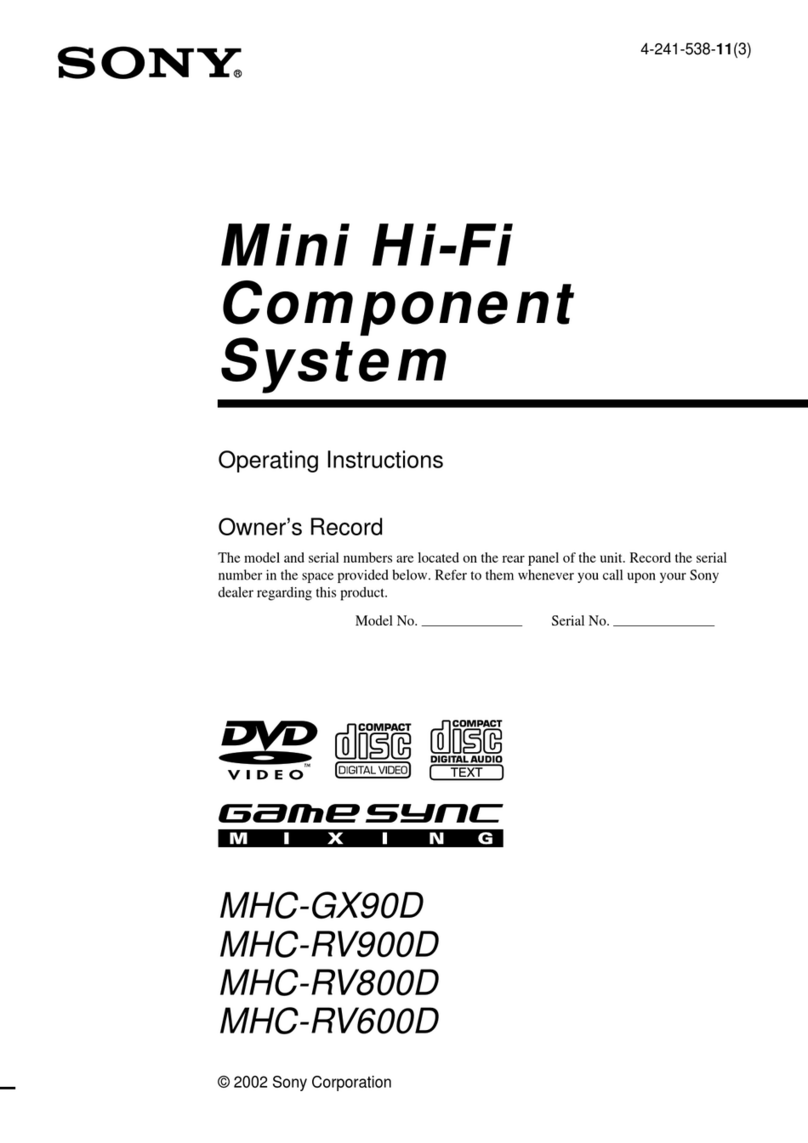LG RAD225B User manual

Mini Hi-Fi System
SERVICE MANUAL
MODEL: RAD225B (RAS225B)
CAUTION
BEFORE SERVICING THE UNIT, READ THE “SAFETY PRECAUTIONS”
IN THIS MANUAL.
MODEL: RAD225B (RAS225B)SERVICE MANUAL
P/NO : AFN73972629 MARCH, 2010
Website http://biz.lgservice.com
Internal Use Only

1-1
[CONTENTS]
SECTION 1. GENERAL
• SERVICING PRECAUTIONS. . . . . . . . . . . . . . . . . . . . . . . . . . . . . . . . . . . . . . . . . . . . . . . . . 1-2
• ESD PRECAUTIONS . . . . . . . . . . . . . . . . . . . . . . . . . . . . . . . . . . . . . . . . . . . . . . . . . . . . . . . 1-4
• SERVICE INFORMATION FOR EEPROM . . . . . . . . . . . . . . . . . . . . . . . . . . . . . . . . . . . . . . 1-5
•
PROGRAM DOWNLOAD GUIDE
. . . . . . . . . . . . . . . . . . . . . . . . . . . . . . . . . . . . . . . . . . . . . . . . . . . . . . . . . . . 1-6
• SPECIFICATIONS . . . . . . . . . . . . . . . . . . . . . . . . . . . . . . . . . . . . . . . . . . . . . . . . . . . . . . . . . 1-8
SECTION 2. EXPLODED VIEWS . . . . . . . . . . . . . . . . . . . . . . . . . . . . . . . . . . . . . . . . . . . . . 2-1
• CABINET AND MAIN FRAME SECTION. . . . . . . . . . . . . . . . . . . . . . . . . . . . . . . . . . . . . . . . 2-1
• MECHANISM DECK SECTION (CDM-345). . . . . . . . . . . . . . . . . . . . . . . . . . . . . . . . . . . . . . 2-3
• SPEAKER SECTION . . . . . . . . . . . . . . . . . . . . . . . . . . . . . . . . . . . . . . . . . . . . . . . . . . . . . . . 2-5
• PACKING ACCESSORY SECTION. . . . . . . . . . . . . . . . . . . . . . . . . . . . . . . . . . . . . . . . . . . . 2-6
SECTION 3. ELECTRICAL PART
• TROUBLESHOOTING GUIDE . . . . . . . . . . . . . . . . . . . . . . . . . . . . . . . . . . . . . . . . . . . . . . . . 3-1
• DETAILS AND WAVEFORMS ON SYSTEM TEST AND DEBUGGING. . . . . . . . . . . . . . . 3-14
• WIRING DIAGRAM . . . . . . . . . . . . . . . . . . . . . . . . . . . . . . . . . . . . . . . . . . . . . . . . . . . . . . . 3-18
• BLOCK DIAGRAMS . . . . . . . . . . . . . . . . . . . . . . . . . . . . . . . . . . . . . . . . . . . . . . . . . . . . . . 3-19
• CIRCUIT DIAGRAMS. . . . . . . . . . . . . . . . . . . . . . . . . . . . . . . . . . . . . . . . . . . . . . . . . . . . . . 3-21
• CIRCUIT VOLTAGE CHART . . . . . . . . . . . . . . . . . . . . . . . . . . . . . . . . . . . . . . . . . . . . . . . . 3-33
• PRINTED CIRCUIT DIARGAMS . . . . . . . . . . . . . . . . . . . . . . . . . . . . . . . . . . . . . . . . . . . . . 3-35
SECTION 4. REPLACEMENT PARTS LIST . . . . . . . . . . . . . . . . . . . . . . . . . . . . . . . . . . . 4-1

1-2
SERVICING PRECAUTIONS
NOTES REGARDING HANDLING OF THE PICK-UP
1. Notes for transport and storage
1) The pick-up should always be left in its conductive bag until immediately prior to use.
2) The pick-up should never be subjected to external pressure or impact.
2. Repair notes
1) The pick-up incorporates a strong magnet, and so should never be brought close to magnetic materials.
2) The pick-up should always be handled correctly and carefully, taking care to avoid external pressure and
impact. If it is subjected to strong pressure or impact, the result may be an operational malfunction and/or
damage to the printed-circuit board.
3) Each and every pick-up is already individually adjusted to a high degree of precision, and for that reason
the adjustment point and installation screws should absolutely never be touched.
4) Laser beams may damage the eyes!
Absolutely never permit laser beams to enter the eyes!
Also NEVER switch ON the power to the laser output part (lens, etc.) of the pick-up if it is damaged.
5) Cleaning the lens surface
If there is dust on the lens surface, the dust should be cleaned away by using an air bush (such as used
for camera lens). The lens is held by a delicate spring. When cleaning the lens surface, therefore, a cot-
ton swab should be used, taking care not to distort lens.
6) Never attempt to disassemble the pick-up.
Spring has excess pressure. If the lens is extremely dirty, apply isopropyl alcohol to the cotton swab.
(Do not use any other liquid cleaners, because they will damage the lens.) Take care not to use too much
of this alcohol on the swab, and do not allow the alcohol to get inside the pick-up.
Storage in conductive bag Drop impact
NEVER look directly at the laser beam, and don’t allow
contact with fingers or other exposed skin.
Magnet
How to hold the pick-up
Conductive Sheet
Cotton swab
Pressure
Pressure
SECTION 1. GENERAL

1-3
NOTES REGARDING COMPACT DISC PLAYER REPAIRS
1. Preparations
1) Compact disc players incorporate a great many ICs as well as the pick-up (laser diode). These components
are sensitive to, and easily affected by, static electricity. If such static electricity is high voltage, components
can be damaged, and for that reason components should be handled with care.
2) The pick-up is composed of many optical components and other high-precision components. Care must be
taken, therefore, to avoid repair or storage where the temperature or humidity is high, where strong magne-
tism is present, or where there is excessive dust.
2. Notes for repair
1) Before replacing a component part, first disconnect the power supply lead wire from the unit
2) All equipment, measuring instruments and tools must be grounded.
3) The workbench should be covered with a conductive sheet and grounded.
When removing the laser pick-up from its conductive bag, do not place the pick-up on the bag. (This is
because there is the possibility of damage by static electricity.)
4) To prevent AC leakage, the metal part of the soldering iron should be grounded.
5) Workers should be grounded by an armband (1 MΩ)
6) Care should be taken not to permit the laser pick-up to come in contact with clothing, in order to prevent
static electricity changes in the clothing to escape from the armband.
7) The laser beam from the pick-up should NEVER be directly facing the eyes or bare skin.
Resistor
(1 MΩ)Conductive
Sheet
Resistor
(1 MΩ)
Armband

1-4
ESD PRECAUTIONS
Electrostatically Sensitive Devices (ESD)
Some semiconductor (solid state) devices can be damaged easily by static electricity. Such components
commonly are called Electrostatically Sensitive Devices (ESD). Examples of typical ESD devices are integrated
circuits and some field-effect transistors and semiconductor chip components. The following techniques should
be used to help reduce the incidence of component damage caused by static electricity.
1. Immediately before handling any semiconductor component or semiconductor-equipped assembly, drain off
any electrostatic charge on your body by touching a known earth ground. Alternatively, obtain and wear a
commercially available discharging wrist strap device, which should be removed for potential shock reasons
prior to applying power to the unit under test.
2. After removing an electrical assembly equipped with ESD devices, place the assembly on a conductive surface
such as aluminum foil, to prevent electrostatic charge buildup or exposure of the assembly.
3. Use only a grounded-tip soldering iron to solder or unsolder ESD devices.
4. Use only an anti-static solder removal device. Some solder removal devices not classified as "anti-static" can
generate electrical charges sufficient to damage ESD devices.
5. Do not use freon-propelled chemicals. These can generate electrical charges sufficient to damage ESD
devices.
6. Do not remove a replacement ESD device from its protective package until immediately before you are
ready to install it. (Most replacement ESD devices are packaged with leads electrically shorted together by
conductive foam, aluminum foil or comparable conductive materials).
7. Immediately before removing the protective material from the leads of a replacement ESD device, touch the
protective material to the chassis or circuit assembly into which the device will by installed.
CAUTION : BE SURE NO POWER IS APPLIED TO THE CHASSIS OR CIRCUIT, AND OBSERVE ALL OTHER
SAFETY PRECAUTIONS.
8. Minimize bodily motions when handing unpackaged replacement ESD devices. (Otherwise harmless motion
such as the brushing together of your clothes fabric or the lifting of your foot from a carpeted floor can generate
static electricity sufficient to damage an ESD device).
CAUTION. GRAPHIC SYMBOLS
THE LIGHTNING FLASH WITH APROWHEAD SYMBOL. WITHIN AN EQUILATERAL TRIANGLE, IS
INTENDED TO ALERT THE SERVICE PERSONNEL TO THE PRESENCE OF UNINSULATED
“DANGEROUS VOLTAGE” THAT MAY BE OF SUFFICIENT MAGNITUDE TO CONSTITUTE A RISK OF
ELECTRIC SHOCK.
THE EXCLAMATION POINT WITHIN AN EQUILATERAL TRIANGLE IS INTENDED TO ALERT THE
SERVICE PERSONNEL TO THE PRESENCE OF IMPORTANT SAFETY INFORMATION IN SERVICE
LITERATURE.

1-5
SERVICE INFORMATION FOR EEPROM
POWER ON
FLD no disc status
Remote control ‘ ’ + Front ‘STOP’
push same timing during 5s
FLD ‘OP-0….
Move to appropriate position
and make changes
with Rmc ‘skip, mode, play’ key.
Press STOP key
FLD ‘write ok’
Remote control ‘ ’ +
Front ‘STOP’ push same timing
FLD ‘E2P CLR’
Completed
NAME
OPT 0
OPT 1
OPT 2
OPT 3
OPT 4
OPT 5
OPT 6
OPT 7
OPT 8
OPT 9
DETECT NEW EEPROM
(OPTION EDIT SCREEN)
HEX
09
00
00
00
00
68
80
05
40
00

1-6
PROGRAM DOWNLOAD GUIDE
1. AUDIO PROGRAM
Download program file name must be RAD125.HEX
If security program (Water Wall) is activated on your PC, you must save the file to the usb storage
device and disable the security software, then download the file to your set.
Caution: When downloading the file, you should neither unplug the usb device, change to the other
function, nor power off the device. Usb device must be unplugged when the downloading
process is completed.
ON VFD DISPLAY SCREEN
NO USB
↓← Insert usb device at usb function
READ
↓
FIRMWARE
↓
WRITE 00 .. 100
↓
UPDATED
↓
POWER OFF AUTOMATICALLY ← When completed, remove usb device.

1-7
2. CD PROGRAM
Download program file name must be HB001_DATE_00.BIN
If security program (Water Wall) is activated on your PC, you must save the file to the usb storage
device and disable the security software, then download the file to your set.
Caution: When downloading the file, you should neither unplug the usb device, change to the other
function, nor power off the device. Usb device must be unplugged when the downloading
process is completed.
ON VFD DISPLAY SCREEN
NO USB
↓← Insert usb device at usb function
READ
↓
FIRMWARE
↓
FINISH
↓
UPDATED
↓
POWER OFF AUTOMATICALLY ← When completed, remove usb device.

1-8
SPECIFICATIONS
• GENERAL
Power supply 110 ~ 240 V, 50/60 Hz
Power consumption 60 W
Net Weight 3.5 kg
External dimensions (W x H x D) 202 x 307 x 278 mm
Bus Power Supply (USB) DC 5 V 500 mA
Operating conditions Temperature 5 °C ~ 35 °C,
Operation status: Horizontal
Operating humidity 5 % ~ 85 %
Laser Semiconductor laser, wavelength 650 nm
• TUNER FM/AM [MW]
FM Tuning Range (87.5 ~ 108.0) MHz or (87.50 ~ 108.00) MHz
FM Intermediate Frequency 128 kHz
AM Tuning Range (522 ~ 1 620) kHz, (520 ~ 1 710) kHz or
(522 ~ 1 710) kHz
AM Intermediate Frequency 45 kHz
• AMPLIFIER
Output Power Front : 110 W + 110 W (4 Ωat 1 kHz, THD 10 %)
• CD
Frequency Response 40 Hz ~ 20 000 Hz
Signal-to-noise ratio 75 dB
Dynamic range 80 dB
• SPEAKERS
Front Speaker
Type 2 Way 2 Speaker
Impedance 4 Ω
Rated Input Power 110 W
Max. Input Power 220 W
Net Dimensions (W x H x D) 232 x 346 x 289 mm
Net Weight 3.3 kg
Designs and specifications are subject to change without prior notice

I
D
H
G
C
C
F
E
B
A
F
EH
G
D
A
B
FRONT
USB
SMPS
I
258C
255L
260L
256L 255R
256R
258B
258A
251
253
252
250
254
460
460
261 460
460
264
451
A47
276
265
259
A26
460
460
A46
300
460
460
273 274
460
279
460
460
262
460
257
CABLE2
260R
A43
A44
A42
460
SECTION 2. EXPLODED VIEWS
• CABINET AND MAIN FRAME SECTION (RAD225B)
2-1 2-2
NOTES) THE EXCLAMATION POINT WITHIN AN
EQUILATERAL TRIANGLE IS INTENDED
TO ALERT THE SERVICE PERSONNEL
TO THE PRESENCE OF IMPORTANT
SAFETY INFORMATION IN SERVICE
LITERATURE.

2-3 2-4
• MECHANISM DECK SECTION (CDM-345)
018
439
014
013
017
019
026
015
431
020
A01
A02 001
002
003
016 036
010
012
012A
012A
012
432
432
037
A03
A26

2-5
A60
• SPEAKER SECTION
. FRONT SPEAKER (RAS225B)

2-6
• PACKING ACCESSORY SECTION
825 FM Wire Antenna
900 Remote Control
803 Packing
803 Packing
808 Battery
802 Box
801 Instruction Ass'y
804 Bag
824 AM Loop Antenna

3-1
SECTION 3. ELECTRICAL PART
AUDIO ELECTRICAL TROUBLESHOOTIHG GUIDE
1. POWER (SMPS)
No 3.7 VA
YES
Is F901 normal? Replace the F901 (Use the same fuse).
YES
NO
Is BD901 normal? Replace BD901.
YES
NO
Is TH902 normal? Replace TH902.
YES
NO
Is Vcc
(10 V ~ 18 V) supplied to
IC901 Pin7? Is D904 normal?
YES
NO
Check or replace D904.
Is there
about 2.5 V at
IC903 Pin1? Replace IC903.
YES
NO
Is D923 normal? Replace D923.
YES
NO
Is D921 normal? Replace D921.
YES
NO
Is D924 normal? Replace D924.
YES
NO
Is D925 normal? Replace D925.
YES
NO
Is D922 normal? Replace D922.
YES
NO
Power line of I/O PCB is short.
NO

3-2
No PVDD
YES
Is F901 normal? Replace F901 (Use the same fuse).
YES
NO
Is BD901 normal? Replace BD901.
YES
NO
Is TH902 normal? Replace TH902.
YES
YES
NO
Is Vcc
(10 V ~ 18 V) supplied to
IC902 Pin7? Is D905 normal?
YES
NO
Check or replace D905.
•
Check the power CTL "H" signal from µ-COM.
• Check PC902.
Is Q902 normal? Replace Q902.
Check or replace Q910.
YES
NO
Is D929 normal? Replace D929.
YES
NO
Is there about 2.5 V
at IC904 Pin1? Replace IC904.
YES
NO
Is Q910 base "H"?
Power line of main PCB is short.
NO
NO

3-3
No 12 V
Is Vcc
(15 V) supplied to Q953
collector? Check or replace D921.
YES
YES
NO
Is the
13 V Supplied to Q953
base? Check the power CTL “H” signal
from µ-COM.
YES
NO
Check or replace Q953.
No 5 V
Is Vcc
(6 V) supplied to IC951
Pin1? Check or replace D923.
YES
YES
NO
Check
IC951 Pin4 "H". Check the power CTL
“H”’ signal from µ-COM.
YES
NO
Check or replace IC951.

3-4
2. µ-COM PART CHECK I
YES
µ-COM PART
CHECK I
Check
P-SENS CN105
Pin9,10
(3.7 VA).
Check
if input voltage of
IC101 is over
3.7 V.
Check both
end voltage of IC105
(KIA7027).
Refer to SMPS
troubleshooting.
NO
NO
Check voltage of
IC102(LC87Fxxx) Pin59,36.
Check the periphery of
IC105 (KIA7027).
NO Replace
IC105
(KIA7027).
NO
Check if IC105 voltage is
over 3.5 V.
OK OK
YES
YES
YES
YES
YES
No VFD
Is D925 normal? Check or replace D925.
YES
YES
NO
Is ZD951 normal?
Is Q951 normal?
Check or replace ZD951.
Check or replace Q951.
YES
YES
NO
NO
Check or replace VFD.

3-5
3. µ-COM PART CHECK II
µ-COM PART
CHECK II
Refer to SMPS troubleshooting.
NO
Check if
voltage of CN105 Pin10
is 3.7 VA.
Check if output of
D105(MBR0540) is 3.7 V.
NO
Check
both end voltage of
D105, 102.
Check if IC102_Pin49 and
IC102_Pin36,59 are 3.5 V.
YES
Check D102, 105. Replace D102, 105.
NONO
X101:32.768kHz
X102:9.8304MHz
Check the operation.
OK
YES
YES
YES
YES
YES
OK
4. IC101(S24CS16A01)CHECK
CHECK
IC102 PIN47,48
Refer to µ-COM troubleshooting.
NO
Pin47: DATA
Pin48: CLK.
Replace µ-COM.
NO
YES
Check µ-COM
voltage 3.5 V.
Check µ-COM.
YES
OK OK
YES
YES
NO

3-6
5. FLD DISPLAY CHECK
FLD DISPLAY CHECK
OK
YES
Check
CN104 Pin1,2,3 input
voltage.
YES
Check if both end voltage of
F1,F2 are over 3.4 V
VKK : over 26 V.
NO Refer to SMPS troubleshooting.
YES
Check CN304
connection and power
Pin14,15,16(VKK,FL-,FL+),
Pin11(3.7 VA).
YES
OK
NO Check CN304 connection.
YES
Check each
Pin voltage.
YES
Check
IC501(ET6315) voltage
Pin30 VKK:-26 V
Pin13, 43:+5 V.
YES
Check
IC102->IC501
data communication
3Pin->9Pin STB
2Pin->7Pin DATA
4Pin->8Pin CLK
FLD light on?
OK
NO
If voltage is Not 3.7 VA,
check input and output of D501.
YES
Check IC501.
YES
NO Replace IC501.
NO Check input data IC102
Pin2,3,4. YES
OK
Check IC102
YES
NO Replace IC102.
Check output data IC102
Pin2. YES
YES
YES

3-7
6. PWM MODULATION CHECK
PWM MODULATION PART CHECK
Check
CN105 Pin10 3.7 VA.
• Check IC602(PS9850) VDD 3.3 V
(Pin16,24,29,32,35,40,48,61,64)
• Check VDD Core 1.2 V (Pin1,21,43,57,59,60)
• Check X602(19.2 MHz)
NO Refer to SMPS troubleshooting.
Check
X602(19.2 MHz)
operation.
NO Replace X602(19.2 MHz).
Check X602
(19.2 MHz).
OK
YES
NO
Check
IC602(PS9850)
Pin51 CLK input.
Check
IC102(LC87Fxx)
Pin41:PWM RESET
Pin45:PWM SDA
Pin46:PWM SCL
output.
NO Replace R636,R637,R638.
Check line
resistor output
RST: R636 / SCL: R637 /
SDA: R638.
NO
YES
YES
YES
YES
YES
YES
OK
YES
This manual suits for next models
2
Table of contents
Other LG Stereo System manuals

